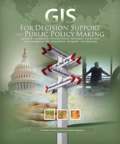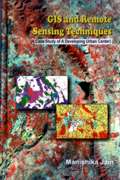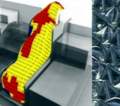
Thursday, August 27th, 2009
Recent economic events have plunged governments into the center of changing economic circumstances that require efficient and effective decision making. These challenges have become even more critical just as this book was released. Governments worldwide at all levels from local to national are increasingly finding that they are being called upon to initiate and participate

Thursday, August 20th, 2009
In June, 1909, Dr. Carl Pulfrich sent out a call for participants for a first “Vacation Course in Stereo Photogrammetry”. He, the founder of the stereo comparator (above photo) realized that after the introduction of this versatile instrument, some stimulus was needed to broaden the applications of terrestrial photogrammetry. The first course attracted 46 participants

Sunday, August 16th, 2009
Geographic information systems (GIS) and remote sensing (RS) are often used in urban development and urban sprawl applications. This book is written with a view to inform readers about this relationship through an analysis of land use change and development. The infrastructure of the study region is also assessed. Author Manishika Jain studies the Udaipur

Sunday, July 12th, 2009
The development of digitally enabled cities is receiving a great deal of attention in the geospatial and design communities and the creation of building information models (BIM) is harnessing the ideas, creativity and needs of architects and engineers. To accelerate the take-up of 3D design in support of digital cities the software LandXplorer combines CAD
Sunday, July 12th, 2009
The annual Geoinformatics Forum Salzburg (GI Forum 2009) was held at University Salzburg in Austria July 7 – 10. About 1000 people attended the English speaking event which is combined with the Deutsche language AGIT 2009 event. GI Forum is a GIScience focused event with a strong educational component and AGIT is oriented around applications

Saturday, July 4th, 2009
Complex problems need integrated and coordinated solutions. Globalisation and sustainable development are the biggest challenges that we need to face and solve. Territories, regions, cities and towns with different levels of development have similar problems, especially when policies and strategies are converging. However, small and medium size cities do not have similar avenues for comunicating

Wednesday, July 1st, 2009
Building design can significantly impact energy efficiency and can result in substantial reductions in operating costs over the lifecycle of a building. To achieve these benefits, new software tools are being developed that help designers and building architects to model building performance at the critical design stage. Design changes can be readily evaluated prior to

Thursday, June 25th, 2009
In Part II of ‘Beneath the Surfaces: The Hidden Elegance in Parametric Design’ architect Don Chong continues to discuss the fuss over ‘parametric design’ and ‘computational design’, based on his observations at the Bentley SmartGeometry conference in San Francisco recently. His attention turns to design data and the development of design tools in real-time.

Friday, June 19th, 2009
The high severity and increasing frequency of major flood events worldwide has driven flooding up the political and risk management agenda. David Martin, Technical Manager of flood risk assessment and modelling consultants Ambiental discusses the development of a new flood modelling system that is being in the UK and how it can be deployed through

Tuesday, June 16th, 2009
So, what’s the fuss over all of this ‘parametric design’ or ‘computational design’, you ask? Or, really, isn’t the honeymoon over for yet another provocative shape and how to apply efficient facets of a beautiful surface onto a new building? Better yet, shouldn’t there be more to ‘parametric design’ in the overall design process –